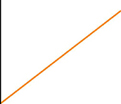
WAVEFORM COMPARISON
SINEWAVE:
A sine wave, or sinusoid, is a mathematical construct (specifically a function) used to model and predict a variety of cyclic phenomena, including the rise and fall of tides, the oscillation of a spring, the incident light hitting the ground the sun over the course of a day. The current of a direct current full-wave rectification system, used to convert AC into DC, can be modeled using an absolute value sine wave, the wave is similar to a normal sine wave because the value always stays above the x-axis, but has twice as many peaks. Along with the sine wave is its cousin, the cosine wave, which is exactly the same except displaced to the right by half a cycle.
SQUAREWAVE:
A square wave is a type of waveform the signal has only two levels. The signal switches between these levels at regular intervals and the switch is instant. These qualities mean a graph of the wave over time will produce shapes with square corners. Most waveforms follow a distinct pattern known as sine. Such waveforms switch back and forth between two levels gradually, such that a graph of the wave over time is a series of curves. The waves of the sea and light waves all follow a sine pattern, as does the level of voltage in an nating current system.
MODIFIED SQUAREWAVE:
Inverters convert DC to AC. Old obsolete inverter technology d square wave output. As stated by the name the wave form is square not sinus as required to have pure sine wave AC. Modified square wave has a step or dead space between the square waves. This reduces the distortion or harmonics that causes problems with electrical devices. Modified Square Wave inverters will work fine for pure resistive loads, like lamps or heaters. It will also work well with pure inductive loads, like universal motors in mixers and blenders. If these devices have electronic speed control this could be damaged.





